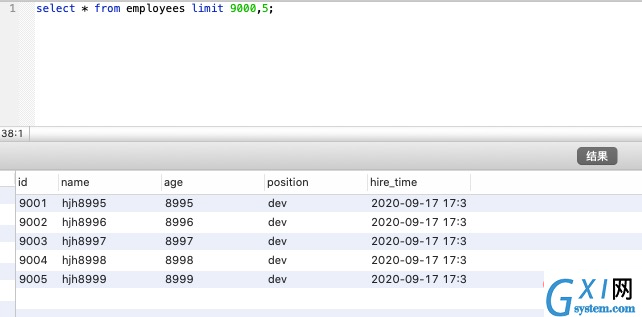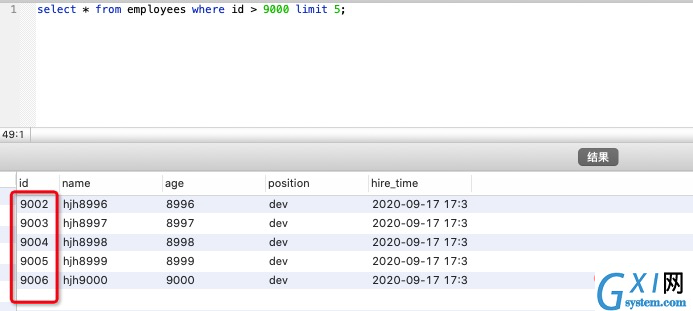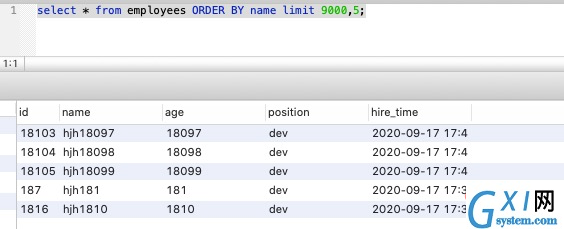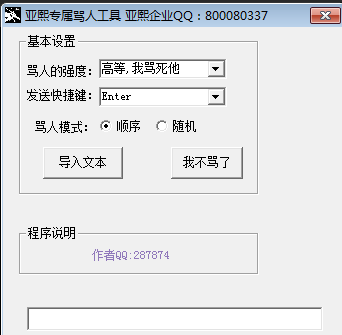实践(2)--MySQL性能优化
时间:2020-09-19 10:49
相关学习推荐:mysql教程 上一篇 《实践(1)--MySQL性能优化》我们讲了数据库表设计的一些原则,Explain工具的介绍、SQL语句优化索引的最佳实践,本篇继续来聊聊 MySQL 如何选择合适的索引。 MySQL 最终是否选择走索引或者一张表涉及多个索引,最终是如何选择索引,可以使用 trace 工具来一查究竟,开启 trace工具会影响 MySQL 性能,所以只能临时分析 SQL 使用,用完之后立即关闭。 讲 trace 工具之前我们先来看一个案例: MySQL 如何选择合适的索引 如果用name索引需要遍历name字段联合索引树,然后还需要根据遍历出来的主键值去主键索引树里再去查出最终数据,成本比全表扫描还高,可以用覆盖索引优化,这样只需要遍历name字段的联合索引树就能拿到所有结果,如下: 对于上面这两种 执行这两句sql 提出来trace值,详见注释 结论:全表扫描的成本低于索引扫描,所以MySQL最终选择全表扫描。 结论:查看trace字段可知索引扫描的成本低于全表扫描,所以MySQL最终选择索引扫描。 分析: 利用最左前缀法则:中间字段不能断,因此查询用到了 分析: 从 explain 的执行结果来看:key_len = 74,查询使用了 name 索引,由于用了 position 进行排序,跳过了 age,出现了 分析: 查询只用到 分析: 和案例3中explain的执行结果一样,但是出现了 分析: 与案例4对比,在Extra中并未出现** 分析: 虽然排序的字段列与索引顺序一样,且 分析: 对于排序来说,多个相等条件也是范围查询。 可以用覆盖索引优化 MySQL 通过比较系统变量 查看下这条sql对应trace结果如下(只展示排序部分): 修改系统变量 trace排序部分结果: 单路排序的详细过程: 双路排序的详细过程: 对比两个排序模式,单路排序会把所有需要查询的字段都放到 sort_buffer 中,而双路排序只会把主键和需要排序的字段放到 sort_buffer 中进行排序,然后再通过主键回到原表查询需要的字段。 如果MySQL排序内存配置的比较小并且没有条件继续增加了,可以适当把 如果MySQL排序内存有条件可以配置比较大,可以适当增大 所以,MySQL 通过 注意:如果全部使用sort_buffer 内存排序一般情况下效率会高于磁盘文件排序,但不能因为这个就随便增大 sort_buffer(默认1M),MySQL很多参数设置都做过优化的,不要轻易调整。 在这我们先往 很多时候我们业务系统实现分页功能可能会用如下SQL实现 表示从表 employees 中取出从 10001 行开始的 10 行记录。看似只查询了 10 条记录,实际这条 SQL 是先读取 10010 条记录,然后抛弃前 10000 条记录,然后读到后面 10 条想要的数据。因此要查询一张大表比较靠后的数据,执行效率是非常低的。 首先来看一个根据自增且连续主键排序的分页查询的例子: 该 SQL 表示查询从第 9001开始的五行数据,没添加单独 order by,表示通过主键排序。我们再看表 employees ,因为主键是自增并且连续的,所以可以改写成按照主键去查询从第 9001开始的五行数据,如下: 查询结果是一致的,我们再对比一下执行计划: 显然改写后的 SQL 走了索引,而且扫描的行数大大减少,执行效率更高。
但是,这条改写的 SQL 在很多场景并不实用,因为表中可能某些记录被删后,主键空缺,导致结果不一致,如下图试验所示(先删除一条前面的记录,然后再测试原 SQL 和优化后的 SQL): 两条 SQL 的结果并不一样,因此,如果主键不连续,不能使用上面描述的优化方法。 另外如果原SQL是order by 非主键的字段,按照上面说饿的方法改写会导致两条SQL的结果不一致。所以这种改写得满足以下两个条件: 再看一个根据非主键字段排序的分页查询,SQL 如下: 发现并没有使用 name 字段的索引(key 字段对应的值为 null),具体原因上前面讲过 : 扫描整个索引并查找到没索引的行(可能要遍历多个索引树)的成本比扫描全表的成本更高,所以优化器放弃使用索引。 知道不走索引的原因,那么怎么优化呢? 其实关键是让排序时返回的字段尽可能少,所以可以让排序和分页操作先查出主键,然后根据主键查到对应的记录,SQL 改写如下: 需要的结果与原 SQL 一致,执行时间减少了一半以上,我们再对比优化前后sql的执行计划: 原 SQL 使用的是 filesort 排序,而优化后的 SQL 使用的是索引排序。 往t1表插入1万行记录,往t2表插入100行记录 一次一行循环地从第一张表(称为驱动表)中读取行,在这行数据中取到关联字段,根据关联字段在另一张表(被驱动表)里取出满足条件的行,然后取出两张表的结果合集。 从执行计划中可以看到这些信息: 上面SQL的大致流程如下: 整个过程会读取 t2 表的所有数据(扫描100行),然后遍历这每行数据中字段 a 的值,根据 t2 表中的 a 的值索引扫描 t1 表中对应的行(扫描 100次 t1 表的索引,1次扫描可以认为最终只扫描 t1 表一行完整数据,也就是总共 t1 表也扫描了100行)。因此整个过程扫描了 200 行。 如果被驱动表的关联字段没有索引,使用NLJ算法性能会比较低(下面有详细解释),MySQL 会选择 Block Nested-Loop Join 算法。 把驱动表的数据读入到 join_buffer 中,然后扫描被驱动表,把被驱动表每一行取出来跟 join_buffer 中的数据做对比。 Extra 中 的Using join buffer (Block Nested Loop)说明该关联查询使用的是 BNL 算法。 上面sql的大致流程如下: 整个过程对表 t1 和 t2 都做了一次全表扫描,因此扫描的总行数为10000(表 t1 的数据总量) + 100(表 t2 的数据总量) = 10100。并且 join_buffer 里的数据是无序的,因此对表 t1 中的每一行,都要做 100 次判断,所以内存中的判断次数是 100 * 10000= 100 万次。 被驱动表的关联字段没索引为什么要选择使用 BNL 算法而不使用 Nested-Loop Join 呢? 如果上面第二条sql使用 Nested-Loop Join,那么扫描行数为 100 * 10000 = 100万次,这个是磁盘扫描。 很显然,用BNL磁盘扫描次数少很多,相比于磁盘扫描,BNJ 的内存计算会快得多。 因此MySQL对于被驱动表的关联字段没索引的关联查询,一般都会使用 BNL 算法。如果有索引一般选择 NLJ 算法,有索引的情况下 NLJ 算法比 BNL算法性能更高。 straight_join解释 straight_join功能同join类似,但能让左边的表来驱动右边的表,能改变优化器对于联表查询的执行顺序。 比如 : 原则:小表驱动大表,即小的数据集驱动大的数据集。 in:当B表的数据集小于A表的数据集时,in优于exists exists:当A表的数据集小于B表的数据集时,exists优于in 将主查询A的数据,放到子查询B中做条件验证,根据验证结果(true或false)来决定主查询的数据是否保留 临时关闭mysql查询缓存,为了查看sql多次执行的真实时间。 四个sql的执行计划一样,说明这四个sql执行效率应该差不多,区别在于根据某个字段count不会统计字段为null值的数据行。 为什么mysql最终选择辅助索引而不是主键聚集索引? 因为二级索引相对主键索引存储数据更少,检索性能应该更高 对于myisam存储引擎的表做不带where条件的count查询性能是很高的,因为myisam存储引擎的表的总行数会被 mysql存储在磁盘上,查询不需要计算。 对于innodb存储引擎的表mysql不会存储表的总记录行数,查询count需要实时计算。 如果只需要知道表总行数的估计值可以用如下sql查询,性能很高 插入或删除表数据行的时候同时维护redis里的表总行数key的计数值(用incr或decr命令),但是这种方式可能不准,很难保证表操作和redis操作的事务一致性。 插入或删除表数据行的时候同时维护计数表,让他们在同一个事务里操作。 想了解更多编程学习,敬请关注php培训栏目! 以上就是实践(2)--MySQL性能优化的详细内容,更多请关注gxlsystem.com其它相关文章!
前言
MySQL Trace 工具
案例分析
# 示例表CREATE TABLE`employees`(`id` int(11) NOT NULL AUTO_INCREMENT,`name` varchar(24) NOT NULL DEFAULT '' COMMENT '姓名',`age` int(11) NOT NULL DEFAULT '0' COMMENT '年龄',`position` varchar(20) NOT NULL DEFAULT '' COMMENT '职位',`hire_time` timestamp NOT NULL DEFAULT CURRENT_TIMESTAMP COMMENT '入职时间',
PRIMARY KEY (`id`), KEY `idx_name_age_position` (`name`,`age`,`position`) USING BTREE
)ENGINE=InnoDB AUTO_INCREMENT=4 DEFAULT CHARSET=utf8 COMMENT='员工记录表';
INSERT INTO employees(name,age,position,hire_time)VALUES('ZhangSan',23,'Manager',NOW());INSERT INTO employees(name,age,position,hire_time)VALUES('HanMeimei', 23,'dev',NOW());INSERT INTO employees(name,age,position,hire_time) VALUES('Lucy',23,'dev',NOW());复制代码EXPLAIN select * from employees where name > 'a';复制代码

EXPLAIN select name,age,position from employees where name > 'a' ;复制代码

EXPLAIN select * from employees where name > 'zzz' ;复制代码
name>'a' 和 name>'zzz' 的执行结果,mysql最终是否选择走索引或者一张表涉及多个索引,mysql最终如何选择索引,我们可以用trace工具来一查究竟,开启trace工具会影响mysql性能,所以只能临时分析sql使用,用完之后立即关闭。trace工具用法
开启/关闭Trace
#开启traceset session optimizer_trace="enabled=on",end_markers_in_json=on;
#关闭traceset session optimizer_trace="enabled=off";复制代码
案例1
select * from employees where name >'a' order by position;sELECT * FROM information_schema.OPTIMIZER_TRACE;
复制代码
{ "steps": [
{ "join_preparation": { --第一阶段:SQL准备阶段 "select#": 1, "steps": [
{ "expanded_query": "/* select#1 */ select `employees`.`id` AS `id`,`employees`.`name` AS `name`,`employees`.`age` AS `age`,`employees`.`position` AS `position`,`employees`.`hire_time` AS `hire_time` from `employees` where (`employees`.`name` > 'a') order by `employees`.`position`"
}
] /* steps */
} /* join_preparation */
},
{ "join_optimization": { --第二阶段:SQL优化阶段 "select#": 1, "steps": [
{ "condition_processing": { --条件处理 "condition": "WHERE", "original_condition": "(`employees`.`name` > 'a')", "steps": [
{ "transformation": "equality_propagation", "resulting_condition": "(`employees`.`name` > 'a')"
},
{ "transformation": "constant_propagation", "resulting_condition": "(`employees`.`name` > 'a')"
},
{ "transformation": "trivial_condition_removal", "resulting_condition": "(`employees`.`name` > 'a')"
}
] /* steps */
} /* condition_processing */
},
{ "substitute_generated_columns": {
} /* substitute_generated_columns */
},
{ "table_dependencies": [ --表依赖详情
{ "table": "`employees`", "row_may_be_null": false, "map_bit": 0, "depends_on_map_bits": [
] /* depends_on_map_bits */
}
] /* table_dependencies */
},
{ "ref_optimizer_key_uses": [
] /* ref_optimizer_key_uses */
},
{ "rows_estimation": [ --预估表的访问成本
{ "table": "`employees`", "range_analysis": { "table_scan": { --全表扫描 "rows": 3, --扫描行数 "cost": 3.7 --查询成本
} /* table_scan */, "potential_range_indexes": [ --查询可能使用的索引
{ "index": "PRIMARY", --主键索引 "usable": false, "cause": "not_applicable"
},
{ "index": "idx_name_age_position", --辅助索引 "usable": true, "key_parts": [ "name", "age", "position", "id"
] /* key_parts */
},
{ "index": "idx_age", "usable": false, "cause": "not_applicable"
}
] /* potential_range_indexes */, "setup_range_conditions": [
] /* setup_range_conditions */, "group_index_range": { "chosen": false, "cause": "not_group_by_or_distinct"
} /* group_index_range */, "analyzing_range_alternatives": { --分析各个索引使用成本 "range_scan_alternatives": [
{ "index": "idx_name_age_position", "ranges": [ "a < name" --索引使用范围
] /* ranges */, "index_pes_for_eq_ranges": true, "rowid_ordered": false, --使用该索引获取的记录是否按照主键排序 "using_mrr": false, "index_only": false, --是否使用覆盖索引 "rows": 3, --索引扫描行数 "cost": 4.61, --索引使用成本 "chosen": false, --是否选择该索引 "cause": "cost"
}
] /* range_scan_alternatives */, "analyzing_roworder_intersect": { "usable": false, "cause": "too_few_roworder_scans"
} /* analyzing_roworder_intersect */
} /* analyzing_range_alternatives */
} /* range_analysis */
}
] /* rows_estimation */
},
{ "considered_execution_plans": [
{ "plan_prefix": [
] /* plan_prefix */, "table": "`employees`", "best_access_path": { --最优访问路径 "considered_access_paths": [ --最终选择的访问路径
{ "rows_to_scan": 3, "access_type": "scan", --访问类型:为sacn,全表扫描 "resulting_rows": 3, "cost": 1.6, "chosen": true, --确定选择 "use_tmp_table": true
}
] /* considered_access_paths */
} /* best_access_path */, "condition_filtering_pct": 100, "rows_for_plan": 3, "cost_for_plan": 1.6, "sort_cost": 3, "new_cost_for_plan": 4.6, "chosen": true
}
] /* considered_execution_plans */
},
{ "attaching_conditions_to_tables": { "original_condition": "(`employees`.`name` > 'a')", "attached_conditions_computation": [
] /* attached_conditions_computation */, "attached_conditions_summary": [
{ "table": "`employees`", "attached": "(`employees`.`name` > 'a')"
}
] /* attached_conditions_summary */
} /* attaching_conditions_to_tables */
},
{ "clause_processing": { "clause": "ORDER BY", "original_clause": "`employees`.`position`", "items": [
{ "item": "`employees`.`position`"
}
] /* items */, "resulting_clause_is_simple": true, "resulting_clause": "`employees`.`position`"
} /* clause_processing */
},
{ "reconsidering_access_paths_for_index_ordering": { "clause": "ORDER BY", "index_order_summary": { "table": "`employees`", "index_provides_order": false, "order_direction": "undefined", "index": "unknown", "plan_changed": false
} /* index_order_summary */
} /* reconsidering_access_paths_for_index_ordering */
},
{ "refine_plan": [
{ "table": "`employees`"
}
] /* refine_plan */
}
] /* steps */
} /* join_optimization */
},
{ "join_execution": { --第三阶段:SQL执行阶段
"select#": 1, "steps": [
{ "filesort_information": [
{ "direction": "asc", "table": "`employees`", "field": "position"
}
] /* filesort_information */, "filesort_priority_queue_optimization": { "usable": false, "cause": "not applicable (no LIMIT)"
} /* filesort_priority_queue_optimization */, "filesort_execution": [
] /* filesort_execution */, "filesort_summary": { "rows": 3, "examined_rows": 3, "number_of_tmp_files": 0, "sort_buffer_size": 200704, "sort_mode": "<sort_key, packed_additional_fields>"
} /* filesort_summary */
}
] /* steps */
} /* join_execution */
}
] /* steps */
}复制代码案例2
select * from employees where name > 'zzz' order by position;SELECT * FROM information_schema.OPTIMIZER_TRACE;
复制代码
常见SQL深入优化
Order by 与 Group by 优化案例1
EXPLAIN select * from employees where name = 'ZhangSan' and position = 'dev' order by age复制代码

name索引 ,从 key_len = 74 也能看出,age 索引列用在排序过程过程中,因为 Extra 字段里没有 using filesort 。案例2
EXPLAIN select * from employees where name = 'ZhangSan' order by position复制代码

Using filesort。案例3
EXPLAIN select * from employees where name = 'ZhangSan' order by age,position复制代码

索引name,age 和 position 用于排序,无Using filesort。案例4
EXPLAIN select * from employees where name = 'ZhangSan' order by position,age复制代码

Using filesort ,因为索引的创建顺序为 name,age,position , 但是排序的时候 age 和 position 颠倒位置了。案例5
EXPLAIN select * from employees where name = 'ZhangSan' and age = 18 order by position,age复制代码

Using filesort **,因为 age 为常量,在排序中被优化,所以索引未颠倒,不会出现 Using filesort 。案例6
EXPLAIN select * from employees where name = 'ZhangSan' order by age asc, position desc;复制代码

order by 默认升序,这里 position desc 变成列降序,导致与索引的排序方式不同,从而产生 Using filesort 。MySQL8 以上版本有降序索引可以支持该种查询方式。案例7
EXPLAIN select * from employees where name in ('ZhangSan', 'hjh') order by age, position;复制代码案例8
EXPLAIN select * from employees where name > 'a' order by name;复制代码

EXPLAIN select name,age,position from employees where name > 'a' order by name;复制代码

优化总结
filesort 和 index。Using index 是指MySQL 扫描索引本身完成排序。index 效率高,filesort 效率低。order by null 禁止排序。注意:where 高于 having,能写在 where 中的限定条件就不要去 having 限定了。Using filesort文件排序原理
filesort文件排序方式
sort buffer 中进行排序;用 trace 工具可以看到 sort_mode 信息里显示 < sort_key, additional_fields > 或者 < sort_key, packed_additional_fields >。max_length_for_sort_data (默认1024字节) 的大小和需要查询的字段总大小来判断使用那种排序模式。max_length_for_sort_data 比查询的字段的总长度大,那么使用单路排序模式;max_length_for_sort_data 比查询字段的总长度小,那么使用双路排序模式。验证各种排序方式
EXPLAIN select * from employees where name = 'ZhangSan' order by position;复制代码

set session optimizer_trace="enabled=on",end_markers_in_json=on; #开启traceselect * from employees where name = 'ZhangSan' order by position;select * from information_schema.OPTIMIZER_TRACE;复制代码
"join_execution": { --SQL执行阶段
"select#": 1,
"steps": [
{
"filesort_information": [
{
"direction": "asc",
"table": "`employees`",
"field": "position"
}
] /* filesort_information */,
"filesort_priority_queue_optimization": {
"usable": false,
"cause": "not applicable (no LIMIT)"
} /* filesort_priority_queue_optimization */,
"filesort_execution": [
] /* filesort_execution */,
"filesort_summary": { --文件排序信息
"rows": 1, --预计扫描行数
"examined_rows": 1, --参数排序的行
"number_of_tmp_files": 0, --使用临时文件的个数,这个只如果为0代表全部使用的sort_buffer内存排序,否则使用的磁盘文件排序
"sort_buffer_size": 200704, --排序缓存的大小
"sort_mode": "<sort_key, packed_additional_fields>" --排序方式,这里用的单路排序
} /* filesort_summary */
}
] /* steps */
} /* join_execution */复制代码max_length_for_sort_data (默认1024字节) ,employees 表所有字段长度总和肯定大于10字节set max_length_for_sort_data = 10;
select * from employees where name = 'ZhangSan' order by position;select * from information_schema.OPTIMIZER_TRACE;复制代码
"join_execution": {
"select#": 1,
"steps": [
{
"filesort_information": [
{
"direction": "asc",
"table": "`employees`",
"field": "position"
}
] /* filesort_information */,
"filesort_priority_queue_optimization": {
"usable": false,
"cause": "not applicable (no LIMIT)"
} /* filesort_priority_queue_optimization */,
"filesort_execution": [
] /* filesort_execution */,
"filesort_summary": {
"rows": 1,
"examined_rows": 1,
"number_of_tmp_files": 0,
"sort_buffer_size": 53248,
"sort_mode": "<sort_key, rowid>" --排序方式,这里用饿的双路排序
} /* filesort_summary */
}
] /* steps */
} /* join_execution */
复制代码max_length_for_sort_data 配置小点,让优化器选择使用双路排序算法,可以在 sort_buffer 中一次排序更多的行,只是需要再根据主键回到原表取数据。max_length_for_sort_data 的值,让优化器优先选择全字段排序(单路排序),把需要的字段放到 sort_buffer 中,这样排序后就会直接从内存里返回查询结果了。max_length_for_sort_data 这个参数来控制排序,在不同场景使用不同的排序模式,从而提升排序效率。分页查询优化
employess 插入一些测试数据drop procedure if exists insert_emp;
delimiter ;;
create procedure insert_emp()begin
declare i int;
set i=1;
while(i<=100000) do
insert into employees(name,age,position) values(CONCAT('hjh',i),i,'dev'); set i=i+1;
end while;end;;
delimiter ;
call insert_emp();复制代码select * from employees limit 10000,10;复制代码
常见的分页场景优化技巧
案例1: 根据自增且连续的主键排序的分页查询
select * from employees limit 9000,5;复制代码
select * from employees where id > 9000 limit 5;复制代码
EXPLAIN select * from employees limit 9000,5;复制代码

EXPLAIN select * from employees where id > 9000 limit 5;复制代码



案例2: 根据非主键字段排序的分页查询
select * from employees ORDER BY name limit 9000,5;复制代码

EXPLAIN select * from employees ORDER BY name limit 90000,5;复制代码

select * from employees e inner join (select id from employees order by name limit 90000,5) ed on e.id = ed.id;复制代码

EXPLAIN select * from employees e inner join (select id from employees order by name limit 90000,5) ed on e.id = ed.id;复制代码

Join关联查询优化
#示例表CREATE TABLE `t1` ( `id` INT (11) NOT NULL AUTO_INCREMENT, `a` INT (11) DEFAULT NULL, `b` INT (11) DEFAULT NULL,
PRIMARY KEY (`id`), KEY `idx_a` (`a`)
) ENGINE = INNODB AUTO_INCREMENT = 10001 DEFAULT CHARSET = utf8;CREATE TABLE t2 LIKE t1;复制代码#t1 1万条记录drop procedure if exists insert_emp_t1;
delimiter ;;
create procedure insert_emp_t1()begin
declare i int;
set i=1;
while(i<=10000) do
insert into t1(a,b) values(i,i); set i=i+1;
end while;end;;
delimiter ;
call insert_emp_t1();
#t2 100条记录drop procedure if exists insert_emp_t2;
delimiter ;;
create procedure insert_emp_t2()begin
declare i int;
set i=1;
while(i<=100) do
insert into t2(a,b) values(i,i); set i=i+1;
end while;end;;
delimiter ;
call insert_emp_t2();复制代码MySQL 的表关联常见有两种算法
案例1:嵌套循环连接 Nested-Loop Join(NLJ)算法
EXPLAIN select * from t1 inner join t2 on t1.a= t2.a;复制代码

案例2:基于块的嵌套循环连接 Block Nested-Loop Join(BNL)算法
EXPLAIN select * from t1 inner join t2 on t1.b= t2.b;复制代码

对于关联SQL的优化
straight_join写法固定连接驱动方式,省去mysql优化器自己判断的时间select * from t2 straight_join t1 on t2.a = t1.a; 代表制定mysql选择 t2 表作为驱动表。in 和 exsits 优化
select * from A where id in(select id from B)
#等价于:for(select id from B){ select * from A where A.id = B.id
}复制代码select * from A where exists (select 1 from B whereB.id=A.id)
#等价于:for(select * from A){ select * from B where B.id = A.id
}
#A表与B表的ID字段应建立索引复制代码Count(*) 查询优化set global query_cache_size=0;set global query_cache_type=0;复制代码
EXPLAIN select count(1) from employees;
EXPLAIN select count(id) from employees;EXPLAIN select count(name) from employees;
EXPLAIN select count(*) from employees;复制代码

常见的优化方法如下:
查询MySQL自己维护的总行数

show table status

将总数维护到Redis里
增加计数表



























